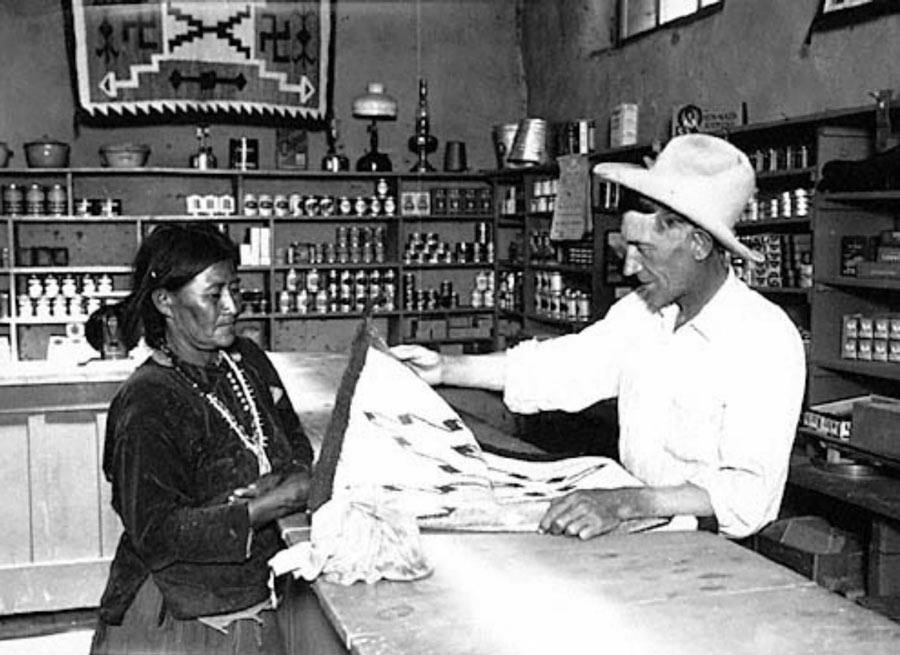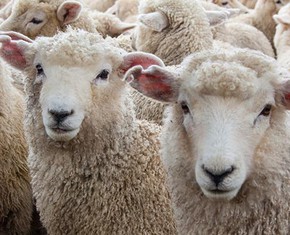The views expressed in our content reflect individual perspectives and do not represent the authoritative views of the Baha'i Faith.
Ya at’eeh! That means “greetings” in my indigenous language. Literally, in English, the phrase means “it is good,” or “it is well.”
I am of my mother’s Folded Arms Clan, Toh ahee dliinii Da shi Zhe e’h. Born for my Father’s the Two Waters that Flows Together Clan, Toh di chiinii da shi chei.
Bitter Water is my paternal grandparent’s clan on my mother’s side. Tsi na jinnii, my maternal grandparent on my father’s side, is the Black Streak Running on the Tree Clan.
I am Bitahnii Wayne Wilson, a Dine’h which is an indigenous spiritual word that isn’t used very often anymore. It’s short for a longer phrase—Nihokaa Dine’h bilaa’ ishdlaii, which means “The Five Fingered Earth Surface People”—also known and recognized by the United States Government as “Navajo.”
That name, Navajo, was given to my Indigenous Dine’h People by the Spaniards when my people first encountered the Spaniards long ago.
The reason why I introduce myself in this way is because I was instructed by my elders and was raised to address myself in a respectful way to all my relatives, the Holy People, and all the elements from the microcosm to the macrocosm within this universe and all existence. As a Baha’i and as a Navajo, I believe that every human being—we five-fingered Earth people—is my relative. We are all one:
These strifes and this bloodshed and discord must cease, and all men be as one kindred and one family …. Let not a man glory in this, that he loves his country; let him rather glory in this, that he loves his kind …. – Baha’u’llah, The Proclamation of Baha’u’llah, p. viii.
To recognize our kinship, I was taught to first introduce myself with my first four original Clans to identify myself to whom I’m addressing.
I was partly raised in a traditional hogan or hogaan, a circular dwelling tied to traditional Dine’h/Navajo teachings of infinite knowledge—which I was introduced to as a young boy, not knowing anything about school, education, and academics. I had to learn about living the modern way of life by going to a BIA (Bureau of Indian Affairs) Boarding School that was affiliated with the Roman Catholic Church.
There I learned, by practicing paternalistic ways of doing things and being a model in their transformation and assimilation process, to participate in competing with one another through capitalism and materialism. That attitude and ideology has become a ruinous influence in my community.
I live in the small remote community of Pine Springs, Arizona, which had at the time I was growing up a small community store called the Pine Springs Trading Post Store, a Catholic Church, and a BIA Boarding School. The Trading Post and the Catholic Church are now old and in ruin and crumbling, and the BIA Boarding school dorms became old too. They were demolished and have now been transformed into the new BIE (Bureau of Indian Education) Pine Springs Day School.
As a child, I went to several schools near Fort Wingate, New Mexico, including the BIA Boarding School just East of Gallup; the Jefferson Public School in a reservation border town; and in Sanders, Arizona, the Sanders Unified Public and High School District, where I graduated in 1988.
I first came across the Baha’i Faith through my family members. I remember seeing the Greatest Name—a Baha’i symbol that means “God is most glorious”—above the doorway in my late grandmother Altah Kahn’s house. I asked her what it was, and she told me in my Dine’h language that it was the name of God in another people’s language.
I was raised by my grandmother, grandfather, aunts and uncles when my mother and father separated and drank more, both of them victims of the intergenerational trauma many Native people suffered as a result of the Boarding School era. Separated from their parents and their culture by U.S. government policy, they never got over that trauma.
So as my parents succumbed to the curse of alcohol, my late elder grandmother Nesbah Burnside partially raised me. She was like my mother, and she taught me until she passed away 1978. Then, soon after her passing, my mother died in an alcohol-related auto accident, and my father passed away from drinking, freezing to death in 1980.
I come from a broken home of depression, alcohol addiction and domestic violence—all connected to the colonization and assimilation process of what the government has historically done to my indigenous Dine’h People. During the Indian wars, the soldiers killed us by any means possible. They called it the “scorched earth” campaign, forcing us to relocate to another place by making us go on the Hwéeldi, The Long Walk—the 1864 deportation and ethnic cleansing of my people—and housing us living in the ground like wild animals. It was and is these types of inhumane practices that created the intergenerational trauma that took such a toll on me and my family.
It wasn’t until after I graduated from high school that I started investigating the Baha’i Faith little by little, and putting in my time of service at a grassroots level, helping in the development and the establishment of NABI—The Native American Baha’i Institute—on the Navajo tribal lands in Burnt Water, Arizona.
My uncle and aunt, the late Benjamin Kahn and Lorraine Cowboy-Kahn, became the caretakers of NABI and that’s when and where I became more involved with the Baha’i Faith as a youth. During that period, we began doing our indigenous arts, service, language, and cultural activities, and reading the Baha’i writings within the community. I decided to become a Baha’i in 1991, and went on to study the Baha’i Faith at Louhelen Baha’i School in Davison, Michigan. During that time I commuted back and forth to college to study at Mott Community College in Flint, Michigan. I now live on and near the Navajo Nation when I’m not traveling. I always come back to my home and community of Pine Springs, Navajo Nation, Arizona.
I’m writing to introduce myself to you all, because I wanted to tell you about my indigenous perspective on the Baha’i Faith. As a Navajo, and as a Baha’i, I have studied and done research during my own personal investigation of the Baha’i Faith using our indigenous Dine’h/Navajo Spiritual teachings and concepts.
Those concepts have a remarkable synchronicity, which validate the Baha’i concept of two twin prophets or manifestations—for Baha’is, the Bab and Baha’u’llah—and for Navajos, our Holy Twin Manifestations that are used in our nine night ceremonies, and also described in our Dine’h/Navajo emergence stories, which are only told during the winter season.
Investigating these concepts inspired me to put together several PowerPoint presentations on the conceptual connections between the Baha’i beliefs and my indigenous way of life, which I travel around the country to present and explain. I feel by sharing these startling discoveries about the many parallels between Navajo and Baha’i spirituality, that I can help educate interested people about who we are, using what Abdu’l-Baha said and wrote in 1918 about speaking to other cultures regarding the Baha’i message. He said that anyone who wants to bridge the cultural divide and communicate with those from another cultural background:
… must first be imbued with their spirit, know their sacred literature, study their national customs and speak to them from their own stand-point, and their own terminologies. He must entertain no thought of his own, but ever think of their spiritual welfare. – Abdu’l-Baha, Star of the West, Volume 5, p. 37.
When I initially read this quote from the Baha’i teachings, it confirmed that what I was doing was right—telling people about the truth and explaining how these indigenous teachings and concepts of Twin Manifestations resonate within the Baha’i Faith, all while using and studying our sacred literature and customs. Speaking from our own Dine’h standpoint and our own Navajo terminologies, I try to stay in tune and maintain our spiritual welfare by telling others about the deep connections between my Dine’h traditions and the Baha’i teachings.
You May Also Like
Comments


















Of the endless trains of the faithless—of cities fill’d with the foolish;
Of myself forever reproaching myself, (for who more foolish than I, and who more faithless?)
Of eyes that vainly crave the light—of the objects mean—of the struggle ever renew’d;
Of the poor results of all—of the plodding and sordid crowds I see around me;
Of the empty and useless years of the rest—with the rest me intertwined;
The question, O me! so sad, recurring—What good amid these, O me, O life?
...
Answer.
That you are here—that life exists, and identity;
That the powerful play goes on, and you will contribute a verse.”
― Walt Whitman, Leaves of Grass